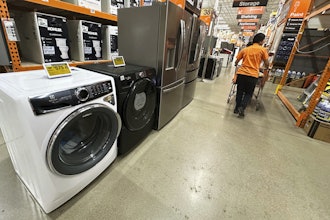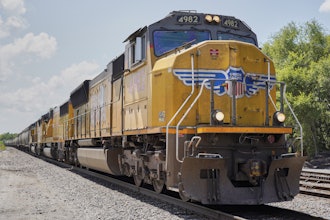With hurricane season on the horizon, and the aftermath of last year’s storms still being with us, it’s important to start to prepare for the unpredictable, yet inevitable storms of 2018. Even if your business isn’t located in an area affected by hurricanes, tornadoes or earthquakes, these natural disasters can still have a significant impact on manufacturers and distributors regardless of local geography. The impact of major disasters can ripple through supply chains and disrupt economies far beyond any localized damage. Yet can even a disruptive event like a natural disaster offer opportunities for smart businesses to earn greater customer loyalty and displace less agile competitors?
Manufacturing businesses rely heavily on distribution of raw materials and manufactured goods, and it’s critical to ensure your company has a strong contingency plan in place to maintain operations and protect the bottom line. To remain agile in the face of global volatility, it’s imperative that manufacturers have the ability to be equally nimble in the way they price their goods and services to reflect how markets are performing. This kind of agility requires a new way of managing information and responding to changes. More and more, companies are looking at artificial intelligence to spot trends early, and respond to sudden changes in a way that maintains operations and keep the business running.
Getting ahead of price and demand volatility
According to research, 40 percent of companies plan to invest more in risk management, property loss prevention or reassess their supply chain risk management strategy as a direct result of last year’s hurricanes, Harvey, Irma and Maria. Following Irma, Florida alone suffered more than $700 million in citrus crop damage, sharply reducing the U.S. orange juice supply, and after Harvey 4 million barrels of oil refining capacity shut down in Texas.
In times of natural disasters, AI can be used to proactively anticipate quantities and distribution channels for the supply chain based on fluctuating market factors like commodity supply levels. With the prescriptive, automated insights that machine learning produces, manufacturers can predict the supply and demand, and prepare for volatility in material supply and pricing even before it happens.
With the help of AI, manufacturers can far more easily determine fluctuating material costs. They’re able to analyze the items they manufacture and distribute daily, and understand customer price sensitivity based on location. As a result, they’re able to adjust prices dynamically and rapidly account for real-time shifts in commodity prices. It also enables them to highlight opportunities for price adjustments, trade deals, and other promotions. AI can identify these variables far more rapidly and easily than people are able to, and that enables manufacturers to quickly adjust prices in real-time based on current market factors. AI-enabled dynamic pricing calculates optimal prices based on algorithms that consider varying factors and therefore allows manufacturers to offer flexible pricing that is most likely to appeal to their customers. Full transparency into material availability and pricing in a real-time environment gives manufacturers a competitive edge in a crowded market. For manufacturers dealing with inevitable weather disasters, the ability to execute a pricing strategy at a moment’s notice will go a long way in maintaining a competitive edge and satisfying buyers’ demands for real-time information.
Leveraging AI-enabled eCommerce to mitigate the risk of natural disasters
In the face of unforeseen natural disasters, usual eCommerce operations can become disrupted. Nonetheless, B2B and B2C customers still need to receive merchandise to maintain operations. In the wake of massively damaging events like hurricanes, it can be difficult to keep the supply chain stable and customers happy. AI can enable companies to optimize their eCommerce strategy at all times and help them deliver more consistent experiences with the channel fluidity that is required in the digital era.
During natural disasters, brick-and-mortar factories are directly affected. By considering inventory management ahead of a given storm season known for destructive weather patterns, companies can help mitigate disruptions in normal operations before they occur. Using AI-enabled forecasting tools, manufacturers can predict how materials will be impacted by natural disasters and adjust inventory accordingly to prepare.
Even harder to predict can be the impact on transport and logistics during a significant disaster event. Anyone who has seen the pictures of freeways flooded during Hurricane Harvey will know that when a major city is hit, transportation can be massively disrupted, fuel supplies run out, and anything moving through that city can be tied up for days or weeks.
The ripple-effect on other businesses that require dependent transportation of materials and products is significant, long-term, and hard to predict without the power of AI. By using machine learning algorithms to analyze multiple variables, businesses can better predict how shipping will be affected in the near future. If businesses can maintain availability of products and services and respond rapidly to changes in customer demand, they can not only ensure customers get what they need, but potentially open up entirely new markets as they displace less agile competitors.
Improving customer experience
Manufacturers consistently look for new ways to improve relationships with customers. By understanding consumption patterns and buying preferences, and anticipating their needs before they ask, manufacturers will be well ahead of the mark. In the age of eCommerce and the “Amazon Effect,” both manufacturers and their customers expect greater control over understanding the availability of a product, its price and when they can expect to receive it.
To provide a shopping experience akin to well-known eCommerce giants requires not just raw data, but the ability to turn that data into actionable insights to improve business operations and deliver a world-class customer experience. When natural disasters are at their seasonal peak, AI can provide insights that enable manufacturers to maintain transparency with customers. In an age where customers are more protective over their data than ever before, this emphasis on transparency is the key to earning trust. Companies that flourish will be the ones to successfully illuminate the black box of pricing and build trust with their customers by embracing transparency as a business differentiator. Customer trust not only reflects positively on brand reputation, but it turns buyers into lifelong brand advocates.
In today’s digital era, manufacturers are expected to deliver superior customer experiences to their buyers. Customers want the process of buying to be seamless, and they want to receive products on time and at the best price. Otherwise, they’ll find another supplier with a better buying experience.
With AI, companies can provide the customer journey their buyers deserve and gain greater control over operations — even in times of inclement weather. AI can be leveraged to make operations more productive and efficient, even in the wake of natural disasters. The automation and precision of AI can provide manufacturers with the right insights they need to ensure stability and keep customers happy.
Geoff Webb is Vice President of Product Marketing at PROS.























